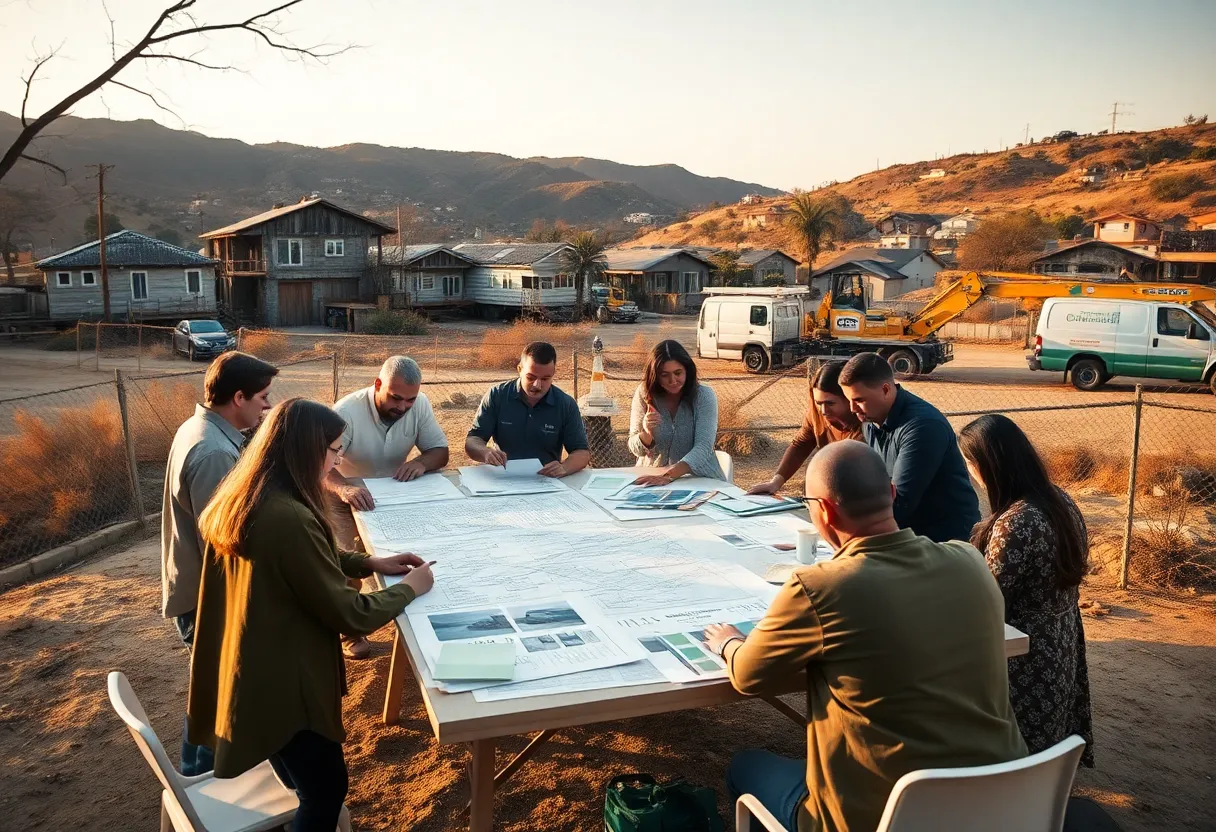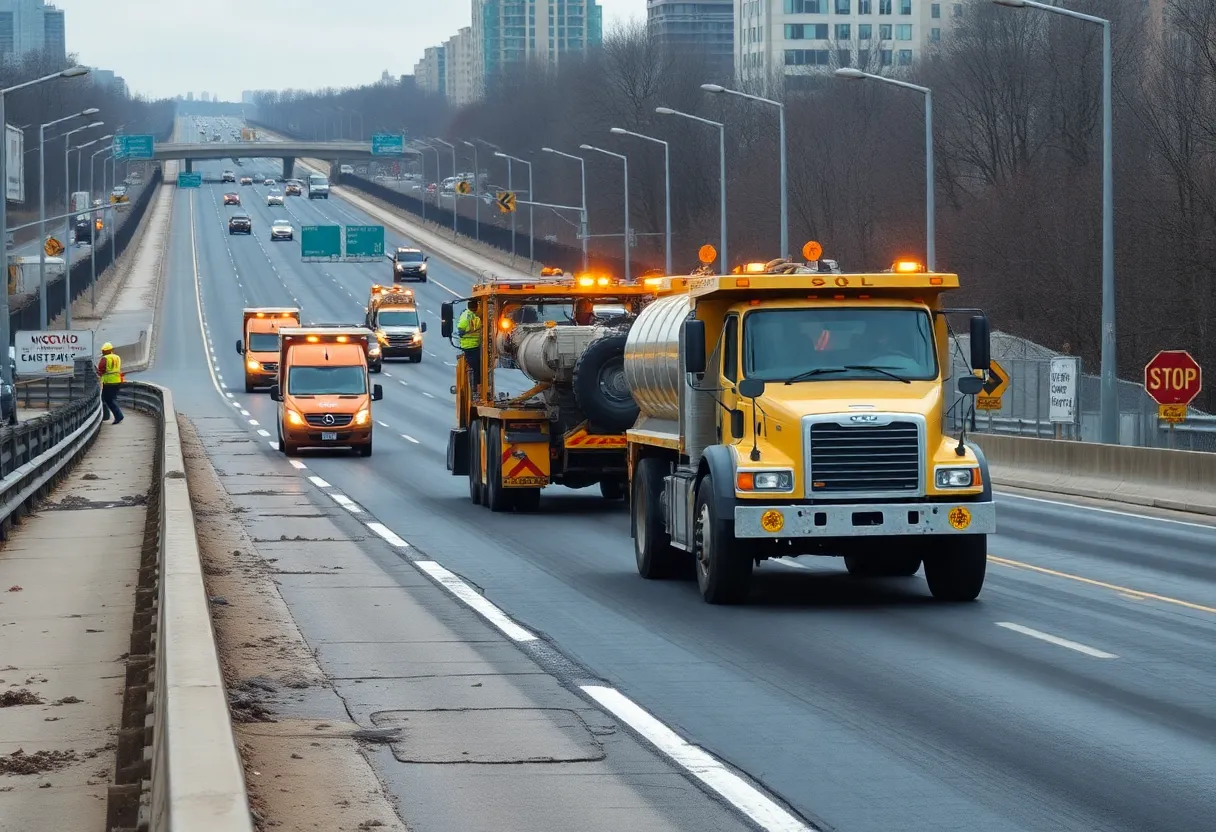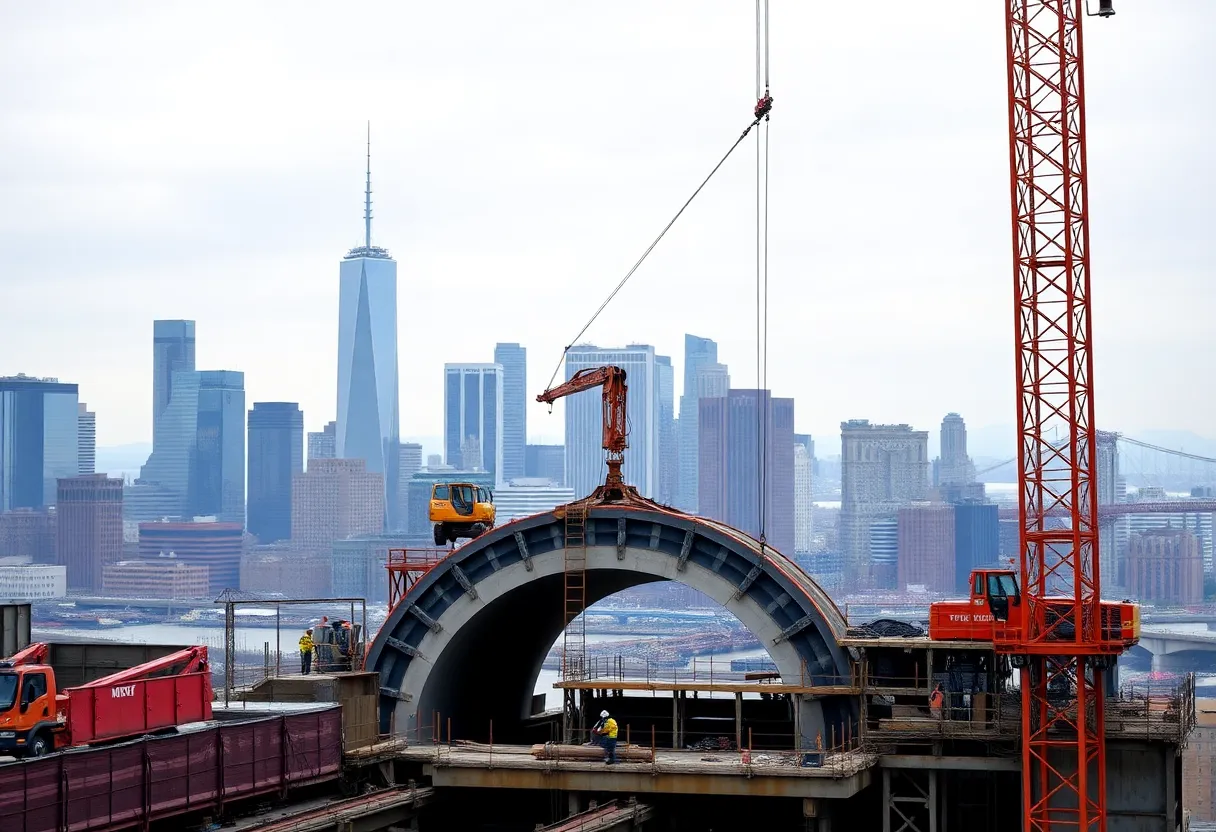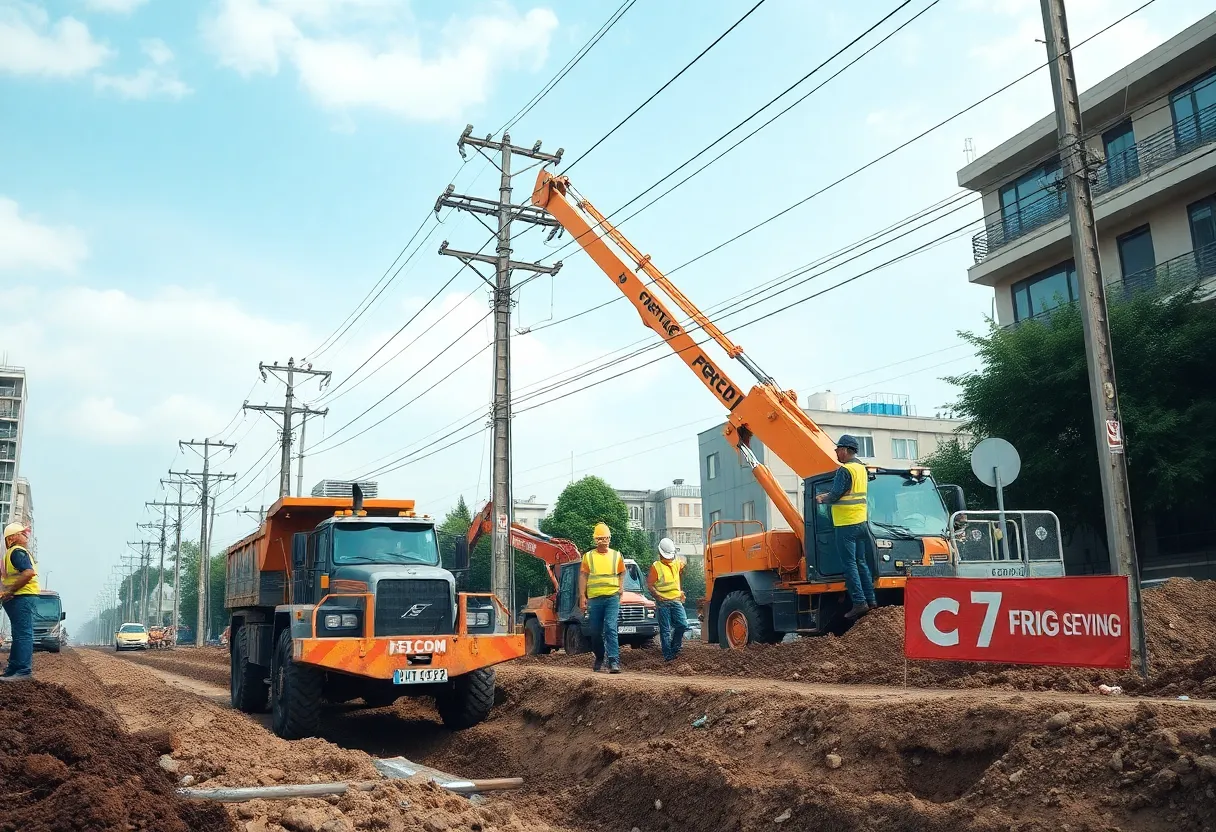Los Angeles, California, August 23, 2025
News Summary
After devastating wildfires that destroyed over 11,000 structures and caused at least 29 deaths, Los Angeles designers, architects and contractors organized a rapid response to support homeowners and communities. An online workspace grew to more than 350 local professionals with about 50 active contributors, producing a crowd-sourced Rebuild LA Handbook, permitting guidance, and Q&A sessions with county officials. Firms are prioritizing fire-resistant materials, updated landscape plans, soil testing and resilient assemblies. Job listings show heightened demand with 17 employers hiring roles from project designers to senior project architects as the region navigates complex technical, policy, and logistical recovery challenges.
Los Angeles Design Community Mobilizes for Post‑Fire Recovery; Jobs and a 350‑Member Rebuild Workspace Pop Up
Quick takeaway: January wildfires destroyed more than 11,000 structures and caused at least 29 fatalities. In response, local designers, architects, contractors, and consultants have mobilized to support recovery. A large, free online workspace for rebuild coordination has grown to over 350 members, and a regional job roundup lists openings at multiple firms hiring experienced project managers and project architects.
Top developments
The immediate recovery picture is active and complex. Professionals across disciplines are sharing permitting tips, insurance guidance, debris‑handling procedures, and practical build strategies through an online workspace created in the days after the fires. That workspace now contains a dozen focused channels, a crowd‑sourced rebuild handbook in development, and organized Q&A sessions with county officials. Organizers report roughly fifty members are regularly active, and the group is set to remain available through the summer at no cost to members.
Labor market and hiring
A curated regional job roundup lists 17 employers in the greater Los Angeles area seeking Project Managers, Project Architects, and senior design staff. Positions range from entry architect and project designer roles to senior project architect and studio leadership posts. Common qualifications across listings include:
- 8–12+ years of professional experience for senior roles
- High proficiency in Revit and other modeling tools (AutoCAD, SketchUp, Rhino, ArchiCAD)
- Strong construction documentation and construction administration experience
- Experience with Type I, III, and V construction for multi‑family and commercial work
- Project management, client coordination, and staff mentoring abilities
Examples in the hiring list include well‑known design studios, mid‑sized offices, and firms that focus on high‑end residential, multi‑family, institutional, and lighting design. Several firms offer roles that emphasize conceptual design skills and visualization as well as technical delivery.
How the online rebuild workspace works
The free workspace is functioning as both a resource library and an ad hoc task force. Channels include navigation of local Department of Building and Safety rules, FEMA claims procedures, fire insurance strategies, hazardous debris handling, and a working channel for a crowd‑sourced Rebuild LA Handbook. The workspace has helped coordinate technical Q&A sessions with county officials and is being used by designers to field rebuild inquiries and triage homeowner needs.
Design community priorities and technical guidance
Practices surveyed in the region emphasize a shift toward fire‑adaptive rebuilding. The most commonly cited priorities are:
- Fire‑resistant materials and details (e.g., roof and building sprinkler concepts, noncombustible assemblies)
- Fire‑safe landscaping that maintains ecological complexity rather than blanket removal of trees
- Soil testing and hazardous waste remediation as part of site work
- Education for homeowners about budgets, alternatives, and trade‑offs
- Policy advocacy for streamlined recovery permitting and updated code to support resilient rebuilds
Landscape experts and designers stress that some native species have evolved fire resilience and that indiscriminate tree removal can damage urban canopy and habitat. Long‑term landscape plans that address species choice, layout, and maintenance are being recommended alongside hardening measures for structures.
Administrative, insurance, and equity issues
Cleanup timelines are being extended by hazardous debris removal and contamination concerns. Insurance availability and funding pathways differ across jurisdictions, which can speed or slow recovery. Practitioners warn that rebuilding must consider social equity: recovery plans that simply return neighborhoods to their previous condition risk reproducing vulnerabilities. Several designers see rebuilding as an opportunity to reimagine neighborhoods toward greater resilience and access, including better transit and infrastructure that reduce pressure to build in high‑risk edges.
Community response and capacity
A crowd‑sourced directory of architects, engineers, and contractors willing to help appeared within days of the fires. Many local designers report a surge in homeowner inquiries; some work will go to smaller firms that do not typically focus on post‑disaster home rebuilds. The fieldwide approach is largely collaborative: firms are sharing resources and refusing to treat work as strictly zero‑sum.
What comes next
Recovery is expected to be a long haul. The online rebuild workspace will remain available while useful and may scale its activity over time. Meanwhile, hiring demand in the region suggests significant work ahead for experienced project architects and project managers. Policy changes, updated permitting pathways, and investments in resilient infrastructure will be crucial if rebuilding is to be fast, equitable, and future‑proof.
Actionable recommendations for homeowners and small firms
- Document damage thoroughly and open insurance and FEMA claims early.
- Engage an architect or design professional experienced in fire‑resistant construction.
- Ask for a site‑specific assessment of landscape, soil contamination, and ember‑exposure paths.
- Plan for maintenance‑based landscape strategies that preserve canopy where safe.
- Expect longer cleanup and permitting timelines when hazardous materials are present.
Frequently Asked Questions
How many structures were lost in the January wildfires?
More than 11,000 structures were destroyed during the January events, with at least 29 fatalities reported.
What is the online rebuild workspace and who can join?
The workspace is a free, volunteer‑organized online group where architects, designers, contractors, and consultants share permitting guidance, insurance tips, rebuild checklists, and a crowd‑sourced handbook. Membership is open to professionals and practitioners involved in recovery.
What kinds of jobs are available in the recovery effort?
Regional job listings include Project Architects, Project Managers, Senior Architects, Designers, and technical staff across residential, multi‑family, commercial, and institutional practices. Roles typically require experience with Revit, construction documentation, and construction administration.
How should homeowners balance ecological health and fire safety in landscaping?
Specialists recommend tailored plant selection, strategic layout, and ongoing maintenance rather than blanket removal of native vegetation. Some native trees and plants can be part of a fire‑adapted landscape when designed and maintained properly.
Key Features at a Glance
| Feature | What it means | Why it matters |
|---|---|---|
| 350+ member rebuild workspace | Free online group with focused channels and a crowd‑sourced handbook | Central hub for shared permitting, insurance, and technical guidance |
| 11,000+ structures lost | Large scale property loss across multiple communities | Indicates sustained demand for reconstruction and professional services |
| 17 employers hiring | Job roundup lists openings across experience levels | Signals near‑term work opportunities for architects and managers |
| Landscape and ecology focus | Emphasis on species choice, layout, and maintenance | Aims to combine safety with habitat and urban canopy preservation |
| Administrative challenges | Insurance, FEMA, hazardous debris removal, and permitting issues | These factors shape the pace, equity, and cost of recovery |
For homeowners and small firms: document damage, engage experienced professionals, and prioritize both safety and ecological health during rebuild planning.
Deeper Dive: News & Info About This Topic
Additional Resources
- The Architect’s Newspaper: Los Angeles design community moves quickly to help rebuild after January wildfires
- Wikipedia: Wildfire
- Fast Company: Los Angeles architects organize Slack group after fires
- Google Search: Los Angeles architects fire Slack group
- Archinect: Explore 19 Project Manager and Project Architect positions at LA architecture firms
- Google Scholar: post-disaster reconstruction architecture Los Angeles
- Archinect: Explore 21 intermediate-level architecture jobs in Los Angeles
- Encyclopedia Britannica: wildfire recovery
- Archinect: 10 featured senior architect and designer jobs in Los Angeles
- Google News: Los Angeles wildfire rebuilding architects
Author: Construction NY News
The NEW YORK STAFF WRITER represents the experienced team at constructionnynews.com, your go-to source for actionable local news and information in New York and beyond. Specializing in "news you can use," we cover essential topics like product reviews for personal and business needs, local business directories, politics, real estate trends, neighborhood insights, and state news affecting the area—with deep expertise drawn from years of dedicated reporting and strong community input, including local press releases and business updates. We deliver top reporting on high-value events such as the New York Build Expo, infrastructure breakthroughs, and cutting-edge construction technology showcases. Our coverage extends to key organizations like the Associated General Contractors of New York State and the Building Trades Employers' Association, plus leading businesses in construction and real estate that power the local economy such as Turner Construction Company and CMiC Global. As part of the broader network, including constructioncanews.com, constructiontxnews.com, and constructionflnews.com, we provide comprehensive, credible insights into the dynamic construction landscape across multiple states.





